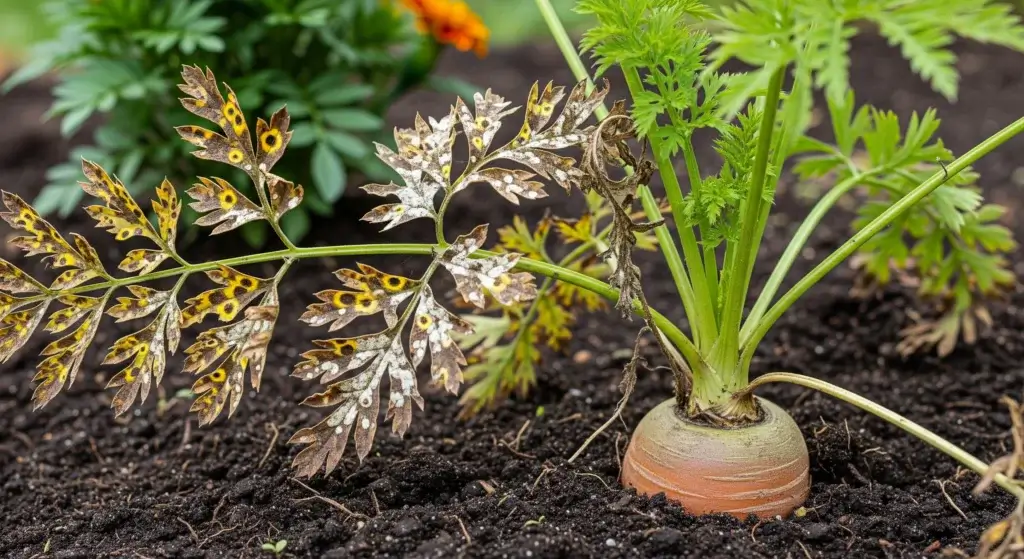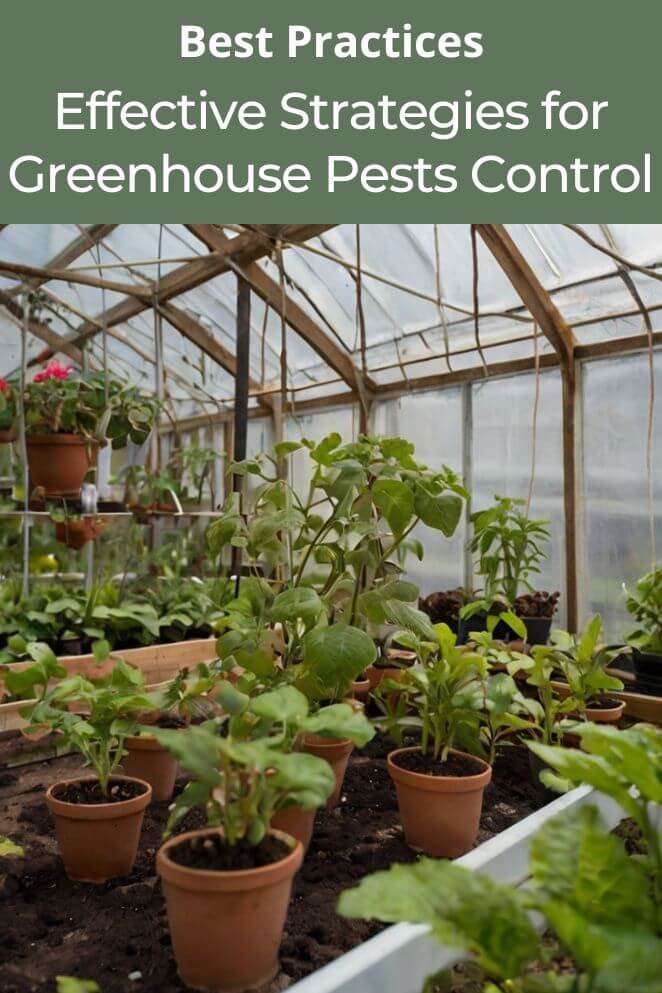
Keeping pests at bay in a greenhouse is a constant challenge for gardeners.
While greenhouses offer plants protection from extreme weather, they also create an ideal environment for pests and diseases to thrive.
Effective greenhouse pest control is essential for keeping plants healthy and productive, and this involves more than simply spraying chemicals.
Instead, an integrated approach to pest management ensures sustainable and effective results.
In this post, we’ll cover everything from identifying common greenhouse pests to using various control methods to keep them under control.
Common Greenhouse Pests
Insects and diseases are two main types of pests that can wreak havoc in a greenhouse.
Recognizing these pests early can make a big difference in managing them effectively.
Insects
Insects can be a real challenge for plants, especially in controlled environments like greenhouses, where they can spread quickly.
Here’s a look at some common pests and how they affect plants:
Aphids
Aphids are small, soft-bodied insects that suck sap from plants.
This can cause leaves to curl and growth to slow.
They reproduce very quickly, so a few aphids can quickly turn into a full infestation if not managed.
Whiteflies
Whiteflies are tiny, white-winged insects that feed on plant sap, causing leaves to turn yellow and weakening the plant.
They can also carry plant viruses, which makes them particularly harmful to greenhouse plants.
Thrips
Thrips are slender insects that feed by puncturing plant cells, leaving small silvery spots or streaks on leaves.
Like whiteflies, they can also spread plant viruses, posing a threat to healthy plants.
Spider mites
Spider mites are almost invisible to the naked eye, but they leave telltale signs like tiny webs and speckled, discolored leaves.
They love warm, dry conditions, making greenhouses an ideal environment for them to thrive.
Mealybugs
Mealybugs are small insects that look like tiny cotton balls on plants.
They feed on plant sap, which weakens the plant and can lead to mold growth.
They often gather in clusters on stems, leaves, and sometimes roots.
Fungus gnats
Fungus gnats are small, fly-like insects. Their larvae feed on plant roots, which can harm young plants.
They’re especially common in soil that stays too moist, so careful watering can help keep them in check.
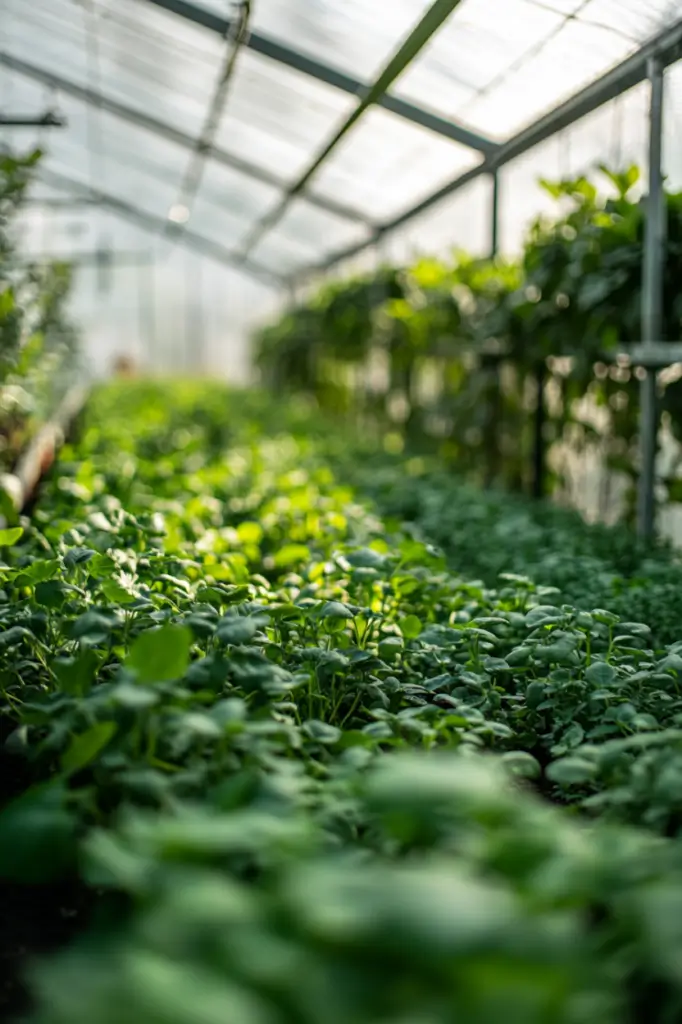
Diseases
Plant diseases can spread quickly and cause serious harm if not managed, especially in greenhouse environments.
Here are a few common diseases to watch out for:
Powdery mildew
Powdery mildew is a fungal disease that looks like white, powdery spots on leaves and stems.
It spreads rapidly in humid conditions and can slow down plant growth if it isn’t controlled.
Downy mildew
Downy mildew causes yellow or brown spots on leaves, often mistaken for powdery mildew.
This disease thrives in cool, damp environments, posing a risk to greenhouse plants.
Botrytis blight (gray mold)
Also called gray mold, botrytis blight appears as fuzzy gray spores on leaves, flowers, and stems.
It spreads fast in humid conditions and can be tough to manage once established.
Bacterial leaf spot
Bacterial leaf spot shows up as water-soaked spots on leaves that turn brown or black over time.
This disease can spread easily through water splashes or contaminated tools, making careful hygiene essential.
Integrated Pest Management (IPM)
Integrated Pest Management (IPM) is an environmentally friendly approach to controlling pests that combines several methods to keep pest populations under control.
Let’s look at each IPM strategy and how it can be applied in a greenhouse setting.
Cultural control
Using cultural control methods can help keep pests and diseases in check naturally.
Here are a few effective practices:
Proper sanitation and hygiene
Keeping the greenhouse clean is one of the simplest and most effective ways to prevent pests.
Regularly remove dead leaves, trim any diseased parts of plants, and disinfect your tools and equipment to stop the spread of disease.
Crop rotation
Rotating crops can help prevent pests and diseases from building up in the soil.
Avoid planting the same type of crop in the same spot every season; switching it up disrupts pest life cycles and keeps soil healthier.
Plant spacing
Overcrowded plants can create humid conditions, which invite disease and pests.
Make sure plants are spaced out well enough to allow good air circulation, keeping humidity down and leaves dry.
Nutrient management
Healthy plants are naturally more resilient.
Regularly test the soil and provide balanced nutrients to avoid deficiencies or excesses, which can make plants more vulnerable to pests and diseases.
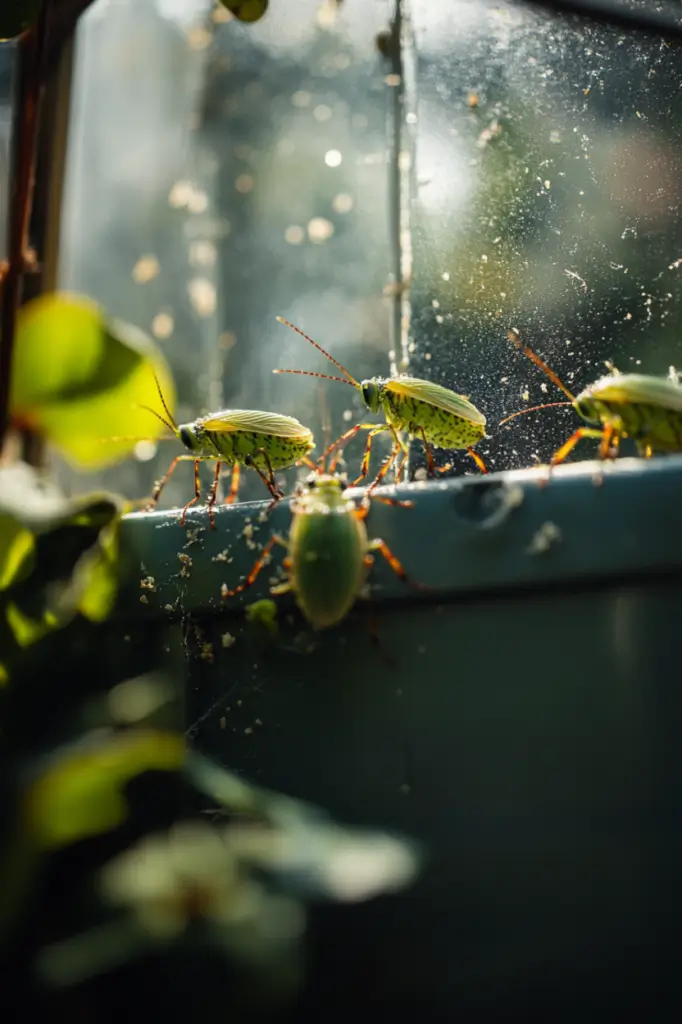
Physical control
Physical control methods can help manage pests in the greenhouse without the need for chemicals.
Here are some effective strategies:
Insect screens
Cover greenhouse vents and doors with insect screens.
These keep pests out while allowing airflow, helping to keep your plants protected without sacrificing ventilation.
Sticky traps
Place yellow or blue sticky traps around the greenhouse.
These traps attract flying insects like whiteflies and fungus gnats, catching them early and giving you a heads-up about possible infestations.
Manual removal
For small pest problems, manual removal can be surprisingly effective.
Use a damp cloth to gently wipe off aphids or pick mealybugs by hand.
This hands-on approach is a quick way to handle minor issues before they spread.
Biological Control
Biological control methods use nature to manage pests, making them effective and eco-friendly. Here’s how they work:
Beneficial insects
Introducing natural predators can help control pest populations.
Ladybugs, for example, are great for controlling aphids, while predatory mites target spider mites.
Parasitic wasps can also be useful for keeping certain pests in check, offering a natural balance in your greenhouse.
Nematodes
Beneficial nematodes are tiny worms that live in the soil and attack pests like fungus gnat larvae.
They’re completely safe for plants and humans, making them an environmentally friendly choice for soil pest control.
Microbial insecticides
These insecticides come from natural sources like bacteria, fungi, or viruses and are specifically designed to target pests.
For example, Bacillus thuringiensis (Bt) is a bacterial insecticide that targets caterpillars without harming beneficial insects.
Chemical control
In an Integrated Pest Management (IPM) approach, chemical control should be the last step, as it can harm beneficial insects and affect the overall balance of your greenhouse ecosystem.
Here’s how to use chemicals responsibly if you need to:
Insecticides
If pest problems persist, consider using insecticides that target specific pests.
Be careful to follow label instructions closely to reduce any impact on beneficial insects and other non-targeted species.
Fungicides
For fungal diseases like powdery and downy mildew, fungicides can be helpful.
Rotating fungicides is important to prevent the fungi from building up resistance, which helps keep treatments effective over time.
Miticides
Spider mites can be tough to manage, and in some cases, a miticide may be needed.
However, use miticides sparingly, as spider mites can quickly develop resistance, making treatments less effective.
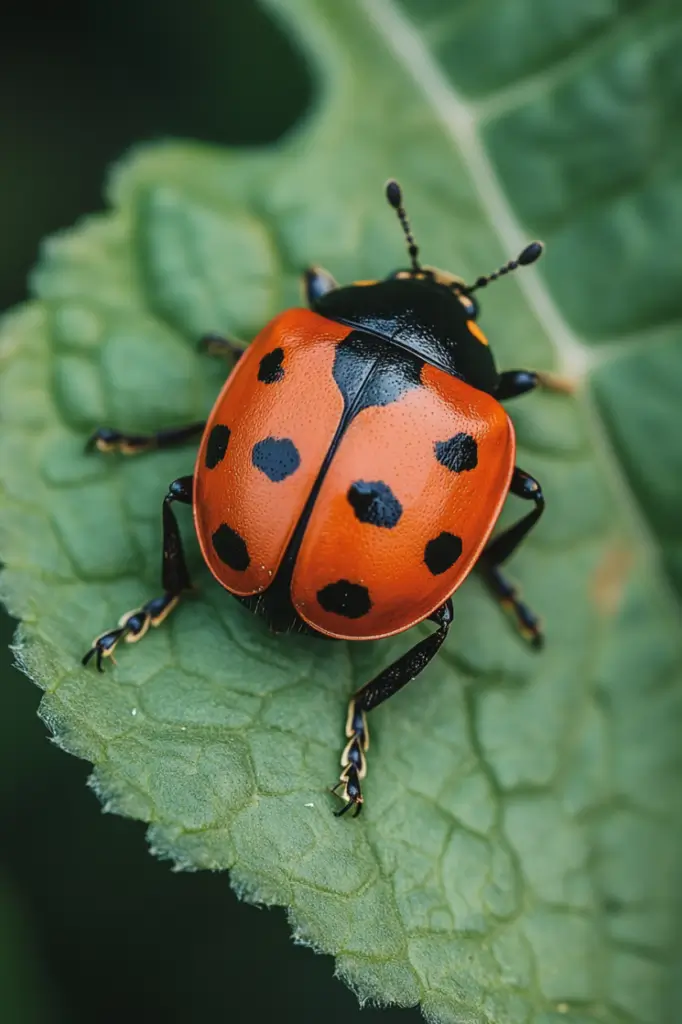
Monitoring and Early Detection
Monitoring and early detection are essential steps in keeping pests under control in your garden or greenhouse.
Regularly checking your plants helps you spot issues before they become serious problems, allowing for quicker, more effective solutions.
Inspect regularly
Take a close look at your plants on a regular basis, watching for any unusual signs.
Yellowing leaves, spots, webbing, or other damage can hint at pests, diseases, or plant stress.
Early detection means you can act quickly, using targeted treatments that are less disruptive to the overall environment.
Use sticky traps for flying pests
Sticky traps are a great tool for monitoring flying insects like whiteflies and fungus gnats.
By placing these traps around your plants, you can track pest activity and get an early warning of any infestations that may be developing.
Prevention and Proactive Measures
Taking preventive steps is the best way to avoid pest issues in your greenhouse.
Here are a few proactive measures to help keep your plants healthy:
Inspect new plants
Before bringing new plants into your greenhouse, give them a careful inspection for any signs of pests or disease.
If possible, keep new plants in a separate area for a while to ensure they’re pest-free before adding them to your main growing space.
Manage humidity levels
High humidity can encourage both pests and fungal diseases.
To keep moisture in check, use fans and maintain good ventilation to promote airflow, helping to create a less inviting environment for pests.
Keep the greenhouse clean
Dead leaves, stems, and other plant debris can attract pests, so regularly clean up any fallen material.
A tidy greenhouse floor helps reduce the chance of pest infestations.
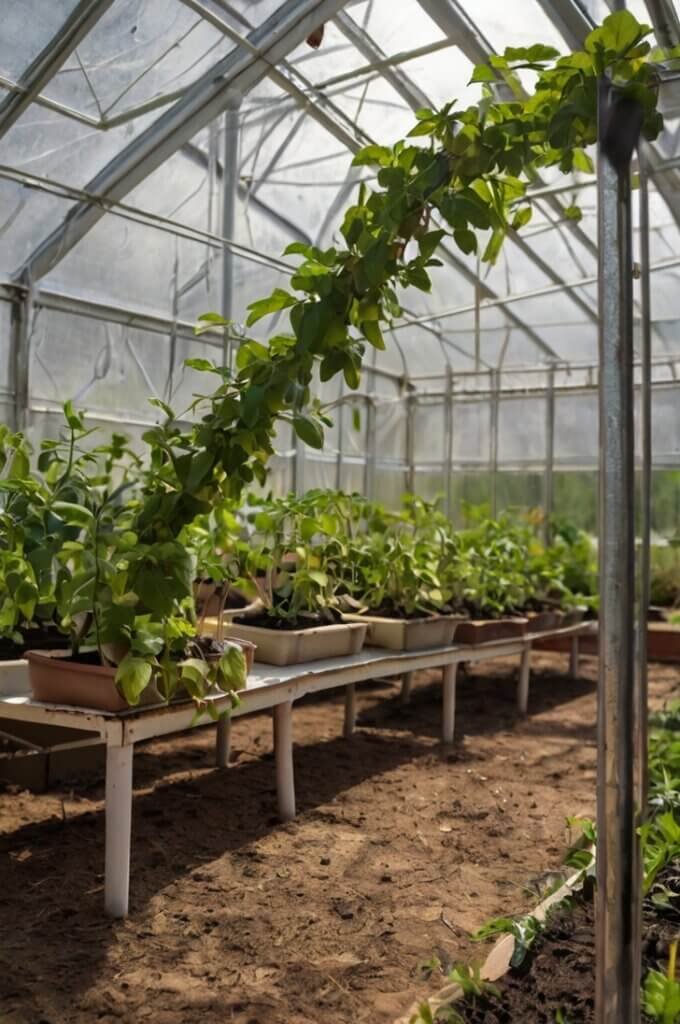
Final Thoughts
Greenhouse pest control may seem challenging, but an integrated approach that includes cultural, physical, biological, and chemical methods can make it manageable.
The key to effective pest control is early detection and prompt action.
By following the guidelines in this post, you’ll be well on your way to creating a healthy, thriving greenhouse environment for your plants.


